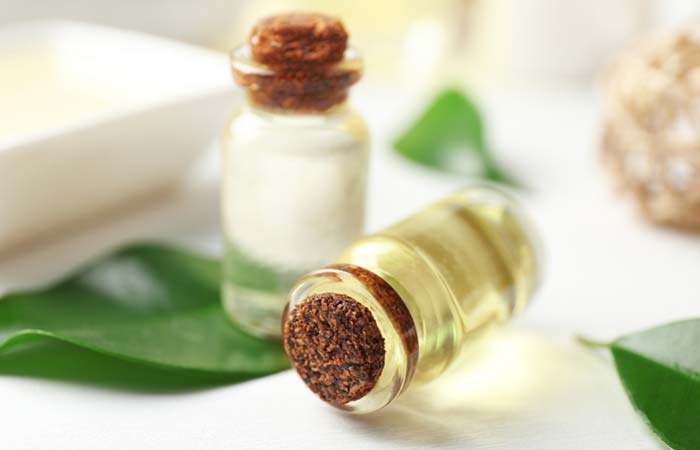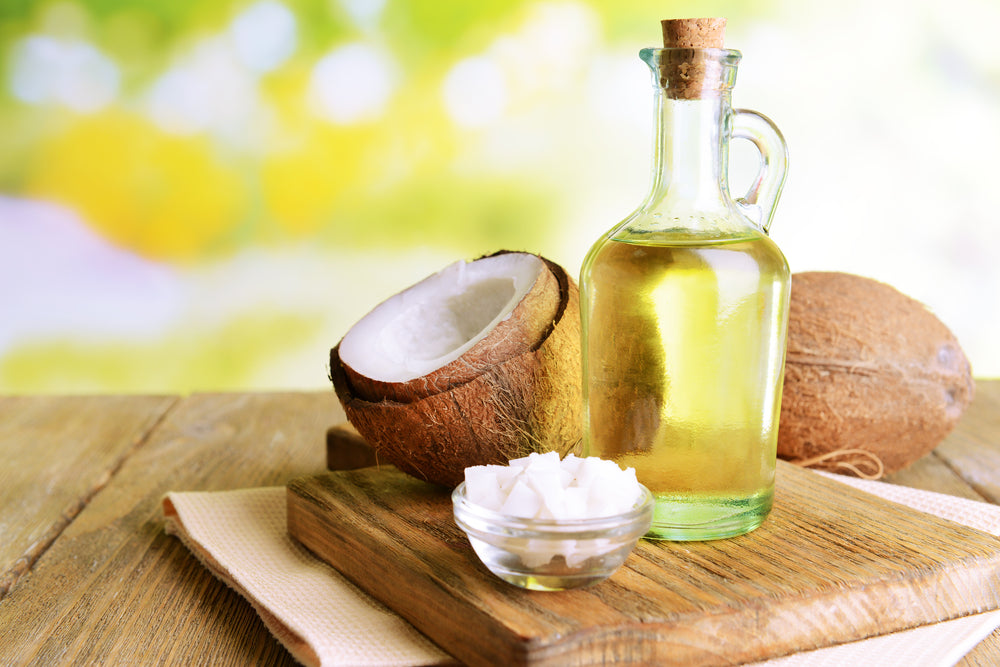Castor oil comes from beans of the ricinus communis plant, which is native to tropical areas of Africa and Asia, and has been used in India for years due to its healing properties. Closely mimicking our skin's own sebum, castor oil absorbs deeply into the skin, making it an effective moisturizer for healing chapped skin.
HEALING PROPERTIES
Ricinoleic Acid: What makes castor oil so unique is that it's mostly comprised of ricinoleic acid (more than 85%). Ricinoleic acid is an anti-inflammatory and anti-bacterial fatty acid that protects the skin against acne-causing bacteria, irritation, and infections. It also absorbs easily and helps heal skin from the inside out.
Oleic Acid: A moisturizing, anti-aging and soothing fatty acid that helps keep skin soft and supple, while also repairing damaged cells present in conditions like eczema.
Linoleic Acid: An omega-6 fatty acid that's helpful in reducing inflammation.

USES
Seal Split Ends: I haven't cut my hair in over 2 years and you wouldn't know it by looking at my ends! And, it's all thanks to organic castor oil. So much so that if I miss a week of applying it, my ends look more damaged and dried out. Simply apply to brushed ends and allow to soak in for a few hours. Wash out as normal.
Tip: For those of you with super long hair or thirsty curls like mine, I recommend applying once a week for lasting results!
Scalp Repair/Hair Growth: Castor oil's antibacterial properties can heal the scalp from dandruff and unwanted bacteria, while also nourishing the skin. Castor oil absorbs deeply into the skin and promotes increased blood circulation of the scalp (and thus increased hair growth) thanks to its high ricinoleic acid content. Simply massage into scalp in small circular motions and allow the oil to absorb for at least half an hour.
Tip: If you find the castor oil to be too viscous on its own, mix with equal parts organic coconut oil.
Facial Cleanse: Castor oil helps draw out toxins and impurities from the skin, making it a great cleansing oil for all skin types. Massage your face with a small amount of castor oil, working it in around your nose and t-zone. Allow the oil to work its magic for 5-10 minutes, then take a soft washcloth and run it under warm-hot water. Place the washcloth over your face and gently wipe (don’t rub!). Rinse the washcloth and repeat once or twice. The steam and warm water will be enough to remove the excess oil, leaving your face feeling soft and fresh.
Tip: If you have oily skin, add a couple drops of organic jojoba oil to help balance your skin.

Heal Scars: Castor oil helps repair damaged skin cells and can nourish and heal scars with consistent application. The fatty acids in castor oil penetrate deep into scar tissue and encourage the growth of healthy tissues around it, which helps scars and blemishes fade away. Note that this will not happen overnight but if applied daily, scars will begin to fade after a few months.
Tip: Apply a pea-sized amount to scar twice a day. Continue applying daily for up to one year for best results.
Reduce Inflammation: Castor oil improves blood flow and can be used to alleviate joint pain, sore muscles and cramps, as well as to soothe inflamed skin from eczema and rashes. Simply massage into affected areas twice a day or make a castor oil pack (see recipe below).
Tip: Because castor oil improves blood flow, it may not be the best choice to ease menstrual cramps on a heavy flow day.
Heal Acne: Thanks to castor oil's rich ricinoleic acid content, cleansing with it can inhibit the growth of acne-causing bacteria. Its natural antimicrobial and anti-inflammatory properties also help reduce redness and inflammation, which helps reduce the signs of breakouts. Simply massage a few drops onto face in a circular motion before going to bed.
Tip: Wash face with warm water before applying to remove excess dirt and open up the pores. If your face feels oily in the morning wash off excess oil with cool water.
WHERE TO BUY
I recommend purchasing organic cold-pressed castor oil. This is the purest form of castor oil since it has not been exposed to any heat—contrary to popular belief on the internet that the darker the castor oil the better. Jamaican black castor oil gets its color from the ash that results from roasting castor beans before pressing out the oiI but vital nutrients can be lost in this process. I recommend this one; it's also available on Amazon for all you Prime lovers.
RECIPES
Coconut Castor Oil: This oil combo is by far a favorite in our home, so much so that we never travel without it! Not only is it antibacterial and anti-inflammatory, it's also super hydrating. Because castor oil is quite thick and can be tough to use on its own, I find it works best when mixed in equal parts with coconut oil. You can also try a 60% castor oil to 40% coconut oil ratio if you want something a little stronger. Learn more about this oil combo here!
Castor Oil Pack: Pain-relieving, anti-inflammatory, and super easy to make! Simply take a clean organic cotton cloth and soak in organic castor oil. Place cloth directly on areas of pain. Lay a towel over and place a hot water bottle or gel pack on top. Leave on for 30-40 minutes and repeat as needed. Tip: Castor oil packs can be stored in an airtight container in the fridge for a few months. Simply add more organic castor oil if drying out, and be sure to change out if soiled.
Love + Light,
Smita :)
